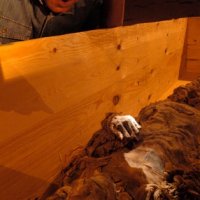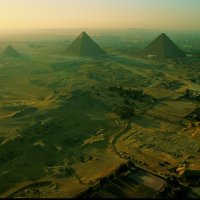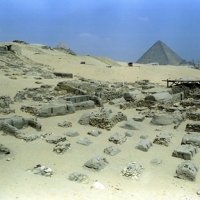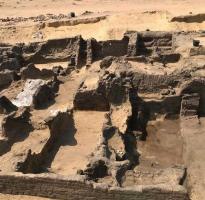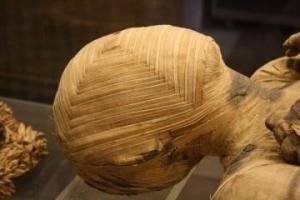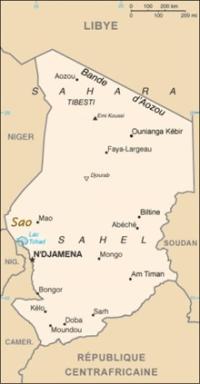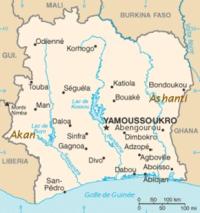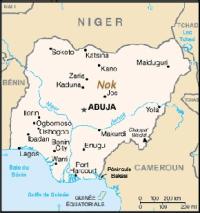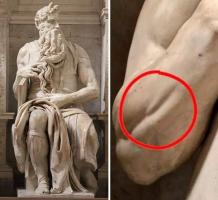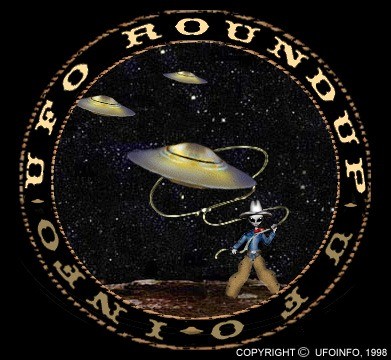Dr. Zahi Hawass: The Valley of the Golden Mummies
March 2, 1996 (All day)

When people ask me which of my discoveries has meant the most to me personally, I often think first of the Valley of the Golden Mummies at Bahariya Oasis. Introducing this amazing site to the world propelled me into an international spotlight. I feel privileged to have been a part of this story, which is so much a part of my own personal history as well as the history of Egyptian archaeology.
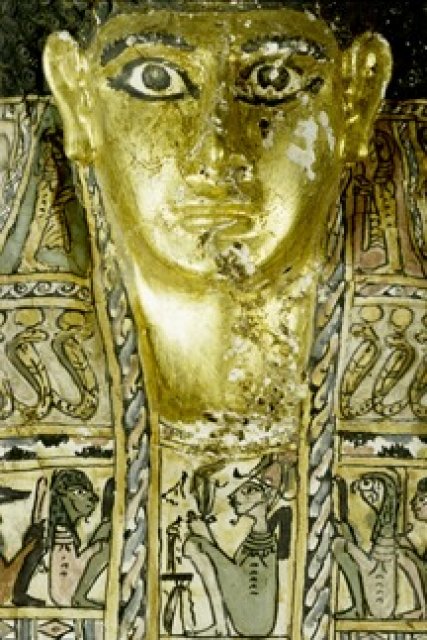
The Discovery
March 2, 1996, is a day that I will never forget. I was working at Giza at the time, supervising the excavation of the Cemetery of the Pyramid Builders. That afternoon, as I sat cleaning the skeleton of a man who had helped to construct the Great Pyramid, my assistant Mansour Boraik came up to me looking very excited. He told me that Ashry Shaker, the director of the SCA office at Bahariya Oasis, had come to tell me about an exciting new discovery. Mansour and I enjoy playing jokes on each other, so I thought at first that he was probably trying to fool me. When I saw Ashry's serious face, however, I knew that something important had happened. Ashry told me that a guard named Abdul Megoud had been chasing after a runaway donkey, when the animal led him to a hole in the ground. When the guard peered inside, he thought that he saw the gleam of gold - surely this was an opening into an ancient tomb! I knew that this could be a significant find, but in 1996, the antiquities inspectorate at Bahariya did not have enough money or qualified archaeologists and conservators to excavate the site properly. I was busy with my work in the Cemetery of the Pyramid Builders, and I could not leave Giza right away. I had the local inspectorate conduct only a preliminary survey, which revealed the location of four tombs. We kept the news very quiet so as not to attract thieves, who seem to be able to smell the resin of a mummy from miles away. Finally, in the early summer of 1999, I was able to leave Giza and go to Bahriya with my team to begin a full-scale excavation of the site.
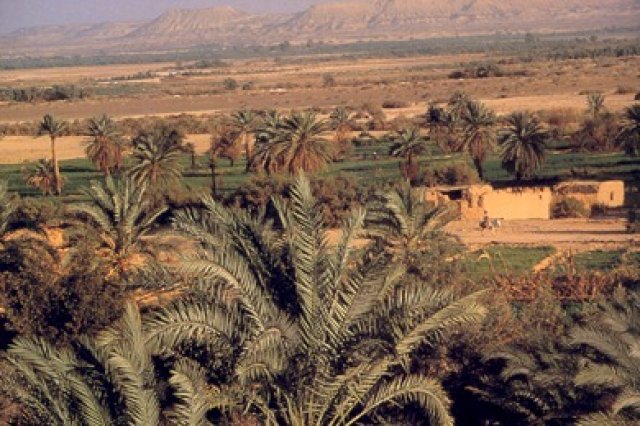
Bahariya Oasis
Bahariya, known in ancient times as the "Northern Oasis," lies in a depression in Egypt's Western Desert, about 260 miles southwest of Cairo. Surrounded by high limestone cliffs, the oasis consists of about 1,240 square miles of land irrigated by a multitude of springs. The oases of the Western Desert have long been places where the water supply was constant and assured, and agriculture could flourish. Dates, grapes, and figs have grown in abundance at Bahariya for millenia. The inhabitants of the oasis in ancient times produced wine that was famous throughout Egypt. Known as "djes-djes," this wine was one of Bahariya's most important exports. Iron ore was also mined nearby. These products, along with the position of the oasis on important caravan routes, ensured that merchants were able to thrive there.
Bahariya has been inhabited for thousands of years - the oldest artifacts found there date back to the Paleolithic Period. We know very little about the early history of the oasis, however, as no archaeological evidence has been found from the Predynastic, Early Dynastic, or Old Kingdom eras. We first hear of Bahariya in Egyptian records dating to the Middle Kingdom (ca. 2061-1665 BC), which mention it as the place where two important trade routes met. It was during this period that the kings of Egypt began to assert their control over the region, recognizing its strategic importance in the defense of the country against Libyans from the west. During the 18th Dynasty (ca. 1550-1295 BC), Bahariya flourished under governors sent from the Nile Valley, and its inhabitants began for the first time to worship Egyptian gods. Although with the decline of the New Kingdom, the fortunes of the oasis seem to have waned, the reunification of Egypt under the 25th (Kushite, ca. 760-660 BC) and 26th (Saite, ca. 688-525 BC) Dynasties, it thrived once again. Another period of prosperity for the oasis began when Bahariya became the center from which the Macedonian conqueror Alexander the Great and his successors the Ptolemies (332-30 BC) were able to control the Western Desert. After the conquest of Ptolemaic Egypt by the Romans, the oasis reached the height of its prosperity as grain was exported in great quantities to feed the empire. During the Greco-Roman period, the wealthy merchants of Bahariya could afford to be buried in great luxury, their mummies covered in brightly shining gold. I believe that the vast cemetery discovered in 1996 was established around the time of Alexander's conquest of Egypt, and may have continued in use until well into the Roman era.
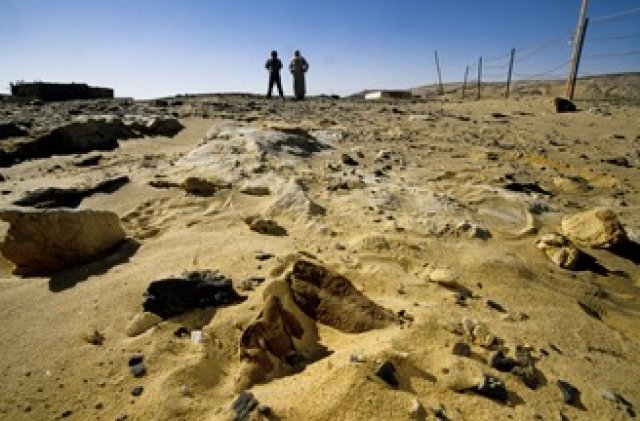
The First Field Season
There are many small villages in the verdant oasis of Bahariya. The Valley of the Golden Mummies lies in the desert about fifteen minutes from a town called Bawiti, just to the south of the remains of a temple built by Alexander the Great. When my team from Giza and I arrived at the site in March of 1999, our eyes were met with a nondescript expanse of sand. Our first order of business was to do a careful survey of the desert surface, collecting fragments of pottery and bone that were scattered throughout the area. From the distribution of these remains, we were able to determine that the cemetery was probably at least 6 square kilometers in area. We then dug a sondage, or test trench, to further clarify the boundaries of the cemetery. Finally, we divided the site into a grid of one-meter squares, the basis of a systematic excavation.
After the initial discovery of the site in 1996, the inspectors from Bahariya had partially excavated a tomb numbered 54 as part of their survey. As the workmen carried away basket after basket of sand, the tomb's layout emerged. Eight steps descend into a small room where the body of the deceased would be received before being placed in one of the two burial chambers that lay beyond. The mummies inside were placed in niches in the walls of the burial chambers, and we believe that the tomb was used over many generations because so many bodies were interred inside the tomb. We uncovered a total of forty three bodies in Tomb 54, some of which were even piled on top of one another.
Just to the west of Tomb 54 lies Tomb 55, which may have been used by relatives of the people buried in tomb 54. The structure of tomb 55 is very different from that of its neighbor - it consists of a square shaft over 3 meters deep, with one burial chamber on each side. The doorways of the burial chambers are carved to resemble temple entrances, their lintels adorned with simple cornices. Two of the rooms were unused, but the other two contained a total of seven mummies, along with the remains of pottery offering vessels and one terra-cotta statue of the dwarf god Bes, who was considered a protector of homes and families.
Another tomb that we excavated during that first season was tomb number 62. This proved to be the largest of the tombs that we explored in 1999, and it contained a total of thirty-two mummies. Many of the bodies had been damaged when the roof of the tomb caved in long ago, and the heads of a few were completely detached. One of the most interesting things that we found in this tomb was a coin dating to the reign of Cleopatra VII (51-30 BC), the lover of Julius Caesar and Mark Antony and the last great queen of Egypt.
I believe that yet another tomb we excavated that season, Tomb I, dates to relatively early in the history of the cemetery. Although it is quite large, it contained only four mummies, indicating that when it was in use, there was still plenty of room at the site. This tomb contained the only example of painted decoration that we found during our excavations: two simple images of the jackal-headed funerary god Anubis, one on either side of the entrance to the burial chamber.
The second-to-last tomb that we excavated in 1999 was Tomb 64. Although the ceilings of the others had all caved at some time in the past, Tomb 64 still had its original roof. It contained a total of eighteen mummies. Finally, just as we were about to close the site for the season, my assistant Tarek El-Awadi came across an unexcavated burial just to the north of Tomb I. It contained a painted anthropoid coffin made of fired clay.
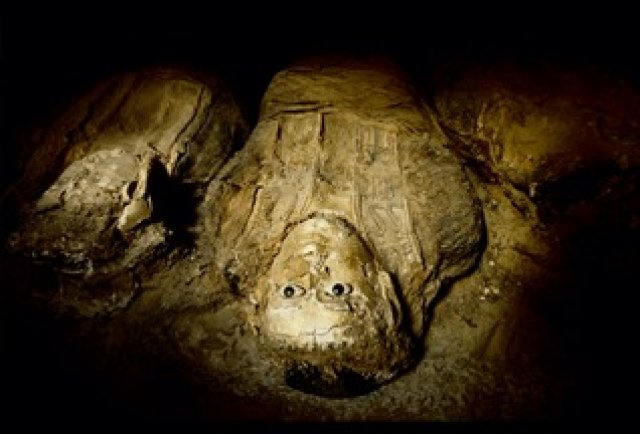
The Mummies
The mummies buried at Bahariya Oasis fall into four distinct categories. The first type represent the wealthiest inhabitants of the area, probably local merchants and their families. These individuals could afford to have their mummies adorned with brightly gilded masks, and sometimes with gilded chest-plates embossed with images of the gods. The second type of mummy is wrapped in linen bandages, the face and upper body covered in painted cartonnage. Many of these mummies were given very lifelike eyes inlaid with marble and obsidian, which were so realistic that they unnerved some of our excavators. The third type of mummy that we encountered in the course of our work is not covered with any type of decorative mask, but is carefully wrapped with strips of linen arranged in elaborate geometric patterns. These mummies probably belonged to the middle class. Finally, we also came across poorly preserved bodies hat had been wrapped quite carelessly. These probably belonged to the poorer inhabitants of the oasis. Unfortunately, because the mummies and the tombs in which they were buried contain no inscriptions, it is impossible for us to know who they once were. It is only through careful study of the remains and the artifacts found with them that we can reconstruct something of the life of Bahariya Oasis in ancient times.
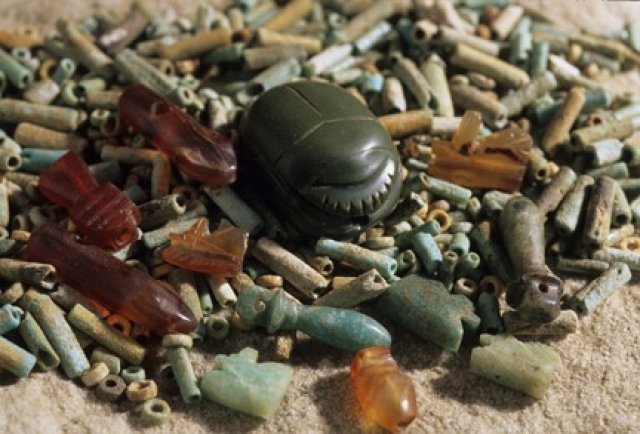
The Artifacts
In addition to the many mummies that we uncovered, my team found a number of interesting artifacts in 1999. There were many stylized clay statuettes representing women either as mothers or as mourners. The motherhood figurines probably symbolized fertility, while the mourners were placed in the tombs to weep for the deceased for eternity. Another type of artifact buried in the tombs of the Valley of the Golden Mummies were small, glass vessels. We do not know what they contained, although some have suggested that they may have held symbolic tears shed for the deceased. They may also have been containers for wine or other beverages, or for cosmetic substances. We found jewelry made of silver, copper, bronze, faience, and ivory. We also uncovered a great deal of pottery, along with many Greco-Roman coins.
When our first field season in the Valley of the Golden Mummies came to an end, I knew that we were only at the beginning of a journey that would take many, many years. I estimate that there could be as many as 10,000 mummies under the sand outside Bawiti, waiting to be discovered.










